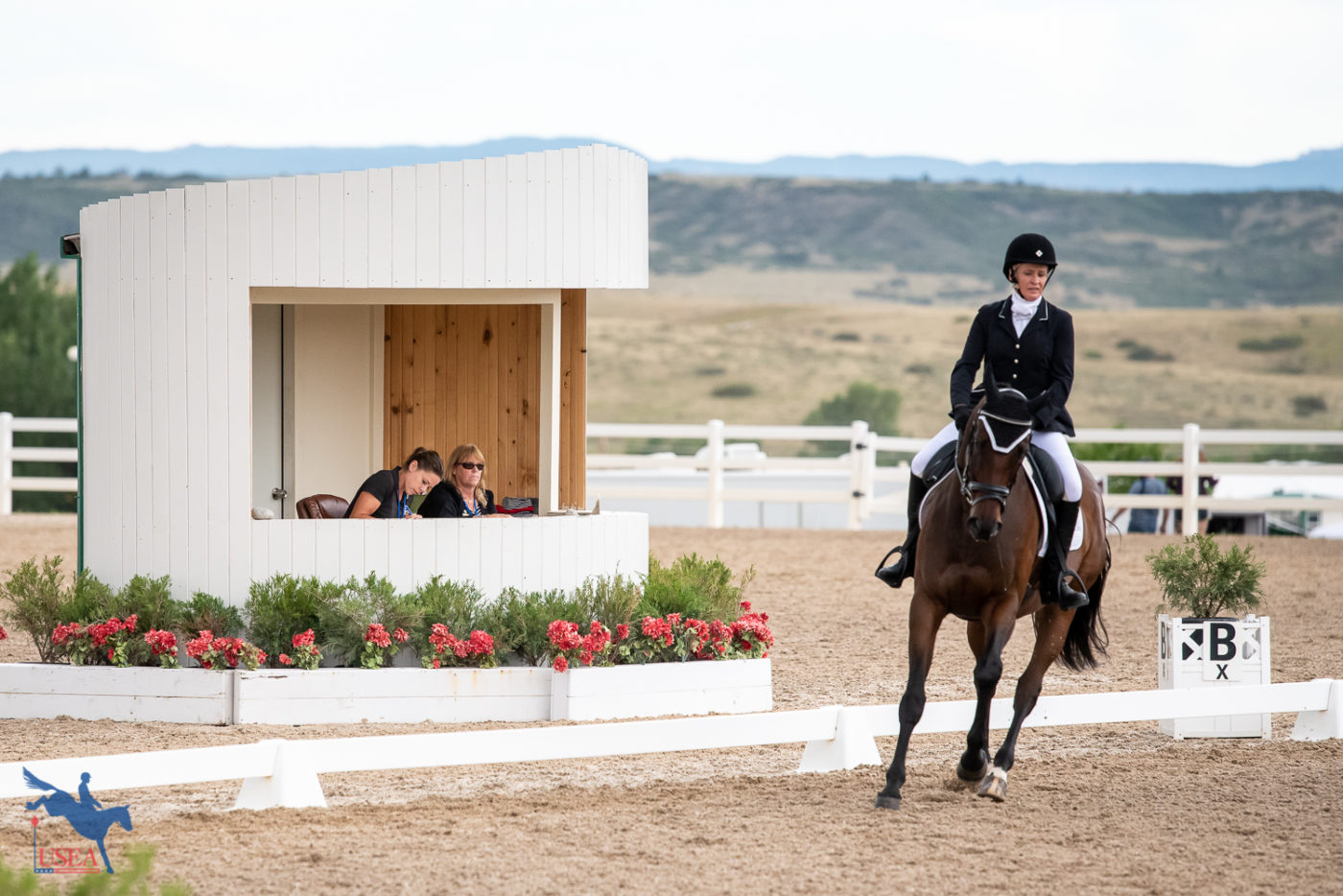

Dressage tests contain a set of movements to be performed by horse and rider in front of a judge who then gives each movement a mark out of 10. Following the completion of the test, the total number of good marks are divided by the total possible good marks to achieve a percentage, which is then subtracted from 100 to achieve a penalty score. This penalty score is carried by the horse and rider through the remainder of the competition.
We’re taking a look at the rules that govern the marking process, the ways by which a rider may incur penalties, and how the scores are calculated. Text has been taken directly from the USEF Rules for Eventing with emphasis added by the USEA.
a. Judges will award good marks from 0-10 for each movement and for each collective mark, with 0 being the lowest mark and 10 being the highest. All half marks from 0.5 - 9.5 may be used both for movements and collective marks, at the discretion of the judge, and scores given must be recorded with a decimal (e.g. as 6.0 instead of 6).
b. Errors of Course or Test will be penalized as follows:
c. All of the following are considered errors, and two points will be deducted per error, but they are not cumulative and will not result in Elimination.
d. In the case of a fall of a horse and/or competitor, the competitor will not be eliminated. He will be penalized by the effect of the fall on the execution of the movement concerned and in the collective marks.
e. After elimination, a competitor may continue his performance to the end. The marks will be awarded in the ordinary way.
a. Elimination is left to the discretion of the Ground Jury in the following cases:
b. Elimination must be applied in the following cases:
a. The good marks from 0-10 awarded by each judge to a competitor for each numbered movement of the dressage test together with the collective marks are added together, deducting any error of course or test.
b. For each judge the percentage of maximum possible good marks obtainable is then calculated by dividing the total good marks received (minus any error of course or test) by the maximum possible good marks obtainable and then multiplying by 100 and rounding the result to two decimal digits. This value is shown as the individual mark for that judge.
c. If there is more than one judge, the average percentage for the competitor is obtained by adding together the percentage for each judge and dividing by the number of judges, always rounding the result to two decimal digits.
d. In order to convert percentage into penalty points, the percentage if there is only one judge or the average percentage if there is more than one judge must be subtracted from 100. The result, rounded to one decimal digit, is the score in penalty points for the test.
Want to catch up on past rule refreshers? Visit the links below:
At some point in your riding career, you probably found yourself feeling or dealing with a little fear, failure, or frustration. We’ve all been there. Regardless of whether we’re competitive or recreational, we’ve likely found ourselves getting a bit stuck on stress or a struggle; dealing with a little defeat or disappointment, or feeling overwhelmed or underprepared.
We might still be recovering physically from the excitement of the 2025 USEA Intercollegiate & Interscholastic Eventing Championships, but mentally we keep playing the weekend over and over again in our heads. This is a weekend that many eventers and lovers of the sport all over the country (ourselves included) look forward to each year and this year was no exception. From teams getting to experience their first time ever at the championship to mascots swapping gear in a show of camaraderie, there were so many great moments that took place during this year's end-of-the-school-year event. Take a look at some of our favorite moments from the three day competition below!
As we gear up for the summer, the competition season isn’t slowing down and it’s time for one of the staple events on the international calendar in the U.S., the Tryon International Three-Day Event (Mill Spring, North Carolina). This event hosts one of five CCI4*-L events on the U.S. calendar, and this year there are 13 competitors in the field. Continue reading below for more interesting facts pertaining to the event that kicks off this Thursday, May 8.
The United States Eventing Association (USEA) is proud to announce the continued partnership with #WeRideTogether as an Official Educational Partner of the USEA. #WeRideTogether is a non-profit organization dedicated to advancing safety and well-being in sports through safeguarding education and abuse prevention efforts.